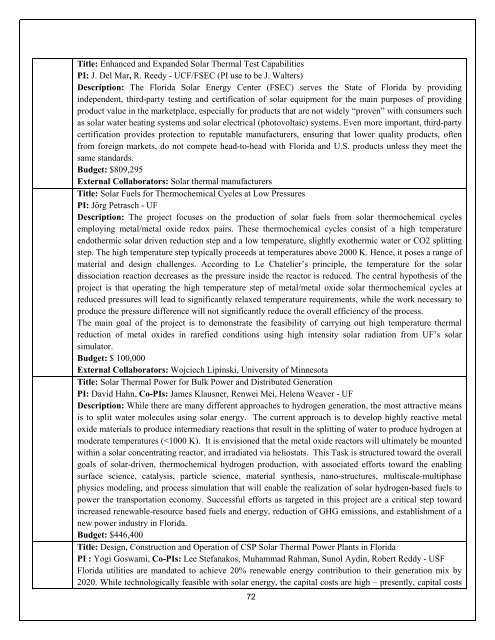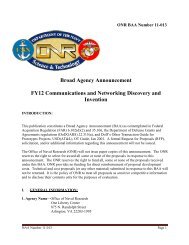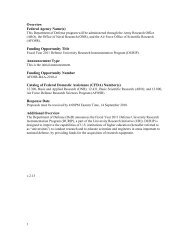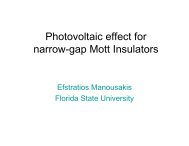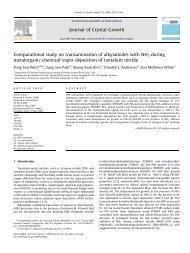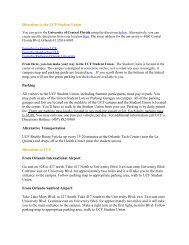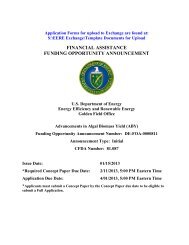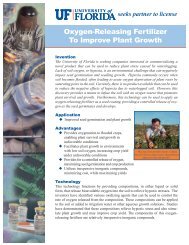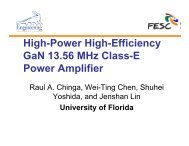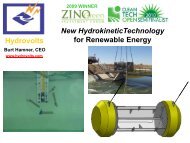Annual Report- Part III - Florida Energy Systems Consortium
Annual Report- Part III - Florida Energy Systems Consortium
Annual Report- Part III - Florida Energy Systems Consortium
You also want an ePaper? Increase the reach of your titles
YUMPU automatically turns print PDFs into web optimized ePapers that Google loves.
Title: Enhanced and Expanded Solar Thermal Test CapabilitiesPI: J. Del Mar, R. Reedy - UCF/FSEC (PI use to be J. Walters)Description: The <strong>Florida</strong> Solar <strong>Energy</strong> Center (FSEC) serves the State of <strong>Florida</strong> by providingindependent, third-party testing and certification of solar equipment for the main purposes of providingproduct value in the marketplace, especially for products that are not widely “proven” with consumers suchas solar water heating systems and solar electrical (photovoltaic) systems. Even more important, third-partycertification provides protection to reputable manufacturers, ensuring that lower quality products, oftenfrom foreign markets, do not compete head-to-head with <strong>Florida</strong> and U.S. products unless they meet thesame standards.Budget: $809,295External Collaborators: Solar thermal manufacturersTitle: Solar Fuels for Thermochemical Cycles at Low PressuresPI: Jörg Petrasch - UFDescription: The project focuses on the production of solar fuels from solar thermochemical cyclesemploying metal/metal oxide redox pairs. These thermochemical cycles consist of a high temperatureendothermic solar driven reduction step and a low temperature, slightly exothermic water or CO2 splittingstep. The high temperature step typically proceeds at temperatures above 2000 K. Hence, it poses a range ofmaterial and design challenges. According to Le Chatelier’s principle, the temperature for the solardissociation reaction decreases as the pressure inside the reactor is reduced. The central hypothesis of theproject is that operating the high temperature step of metal/metal oxide solar thermochemical cycles atreduced pressures will lead to significantly relaxed temperature requirements, while the work necessary toproduce the pressure difference will not significantly reduce the overall efficiency of the process.The main goal of the project is to demonstrate the feasibility of carrying out high temperature thermalreduction of metal oxides in rarefied conditions using high intensity solar radiation from UF’s solarsimulator.Budget: $ 100,000External Collaborators: Wojciech Lipinski, University of MinnesotaTitle: Solar Thermal Power for Bulk Power and Distributed GenerationPI: David Hahn, Co-PIs: James Klausner, Renwei Mei, Helena Weaver - UFDescription: While there are many different approaches to hydrogen generation, the most attractive meansis to split water molecules using solar energy. The current approach is to develop highly reactive metaloxide materials to produce intermediary reactions that result in the splitting of water to produce hydrogen atmoderate temperatures (


